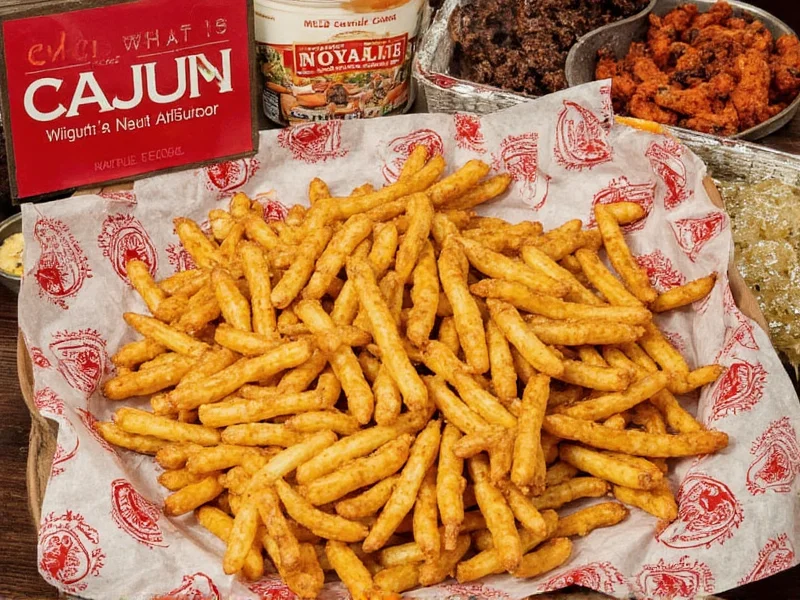Cajun flavor represents one of America's most distinctive culinary traditions, born from the resourcefulness of French-speaking Acadian settlers expelled from Canada in the 18th century. This robust seasoning profile has evolved through centuries of cultural adaptation in Louisiana's bayous, where available ingredients shaped a cooking style that's now celebrated worldwide for its complex depth and rustic character.
Historical Roots of Cajun Cuisine
The story of Cajun flavor begins with the Great Upheaval of 1755, when British forces expelled French settlers from Acadia (modern-day Nova Scotia). These Acadians eventually settled in rural Louisiana, bringing French culinary techniques but adapting to available ingredients like local seafood, game, and vegetables. Isolated from mainstream markets, they developed a "make-do" cooking philosophy that transformed simple ingredients into deeply flavorful dishes.
Unlike Creole cuisine, which developed in urban New Orleans with access to diverse spices and ingredients, traditional Cajun cooking emerged in西南 Louisiana's countryside. This geographical distinction created fundamental differences in flavor profiles that persist today. While both cuisines share some ingredients, their preparation methods and flavor balances remain distinct.
Core Components of Authentic Cajun Flavor
Understanding what is cajun flavor requires examining its foundational elements. The "holy trinity"—a combination of onions, celery, and bell peppers—forms the aromatic base for most Cajun dishes, replacing the French "mirepoix" (onions, carrots, celery) due to the scarcity of carrots in Louisiana's wetlands.
| Essential Cajun Seasoning Ingredients | Flavor Contribution | Traditional Proportion |
|---|---|---|
| Paprika | Earthy base, rich color | 3 parts |
| Garlic Powder | Pungent depth | 2 parts |
| Onion Powder | Sweet aromatic foundation | 2 parts |
| Black Pepper | Sharp warmth | 1.5 parts |
| Cayenne Pepper | Controlled heat | 0.5-1 part |
| Dried Thyme & Oregano | Herbal complexity | 1 part combined |
Contrary to popular belief, authentic Cajun seasoning isn't primarily about heat. The cayenne pepper serves as a background note rather than the dominant flavor. Many commercial blends exaggerate the spiciness, creating a misconception about traditional Cajun flavor profiles. The most authentic preparations emphasize balanced complexity where no single ingredient overwhelms the others.
Cajun vs. Creole: Understanding the Flavor Distinction
One of the most frequent points of confusion involves the difference between cajun and creole flavor. While both originate from Louisiana, they represent distinct culinary traditions:
- Cajun cuisine developed in rural西南 Louisiana among Acadian settlers. It features darker roux (cooked longer), more game meats, and a "country" cooking style with less tomato usage.
- Creole cuisine evolved in urban New Orleans with influences from French, Spanish, African, and Caribbean cultures. It typically uses more tomatoes, a wider variety of spices, and incorporates more European techniques.
When examining what is cajun flavor specifically, the key differentiator is the "holy trinity" base and the emphasis on rustic, one-pot cooking methods developed by settlers with limited resources. Creole cooking, by contrast, often features more complex sauces and incorporates ingredients like tomatoes that weren't readily available to rural Cajun communities.
Traditional Dishes Showcasing Authentic Cajun Flavor
Cajun flavor shines in dishes that demonstrate the cuisine's resourceful origins:
- Gumbo - The quintessential Cajun dish featuring a dark roux, the holy trinity, and either seafood, chicken, or sausage
- Jambalaya - A one-pot rice dish with meat, vegetables, and tomatoes (in Creole versions) or without (in traditional Cajun versions)
- Étouffée - Smothered shellfish served over rice with a rich, flavorful sauce
- Boudin - A sausage made with pork, rice, and seasonings stuffed in casings
- Red Beans and Rice - A Monday tradition using leftover Sunday ham bones
Each of these dishes demonstrates how traditional cajun seasoning ingredients work together to create complex flavors from humble ingredients. The cooking techniques—particularly the careful preparation of roux—are as important as the seasoning blend itself.
Modern Applications of Cajun Flavor
Today, understanding what is cajun flavor made of helps home cooks incorporate this distinctive profile into contemporary dishes. Authentic Cajun cooking emphasizes technique as much as ingredients:
- Start with a proper roux—cooking flour and fat slowly until reaching a deep copper color
- Bloom spices in the hot roux to release their essential oils
- Add the holy trinity early in cooking to develop flavor depth
- Use smoked meats like andouille sausage for authentic flavor layers
- Finish with fresh green onions and parsley for brightness
When using store-bought cajun seasoning blends, look for those without fillers like flour or cornstarch, which were added to commercial blends to prevent caking but aren't traditional. The best blends contain only dried spices and herbs. For the most authentic cajun flavor profile, consider making your own blend using freshly ground spices.
Preserving Authentic Cajun Flavor Traditions
As Cajun cuisine has gained popularity, maintaining authenticity becomes increasingly important. True Cajun flavor isn't about overwhelming heat but rather a harmonious balance of earthy, aromatic, and subtly spicy notes. The cuisine's essence lies in its resourcefulness—transforming simple, available ingredients into deeply satisfying meals through careful technique and seasoning.
When exploring how to use cajun seasoning properly, remember that traditional Cajun cooking developed without precise measurements. Experienced cooks adjust seasoning based on the dish, available ingredients, and personal preference—within the framework of the cuisine's established flavor principles. This adaptability represents the true spirit of Cajun cooking.











 浙公网安备
33010002000092号
浙公网安备
33010002000092号 浙B2-20120091-4
浙B2-20120091-4